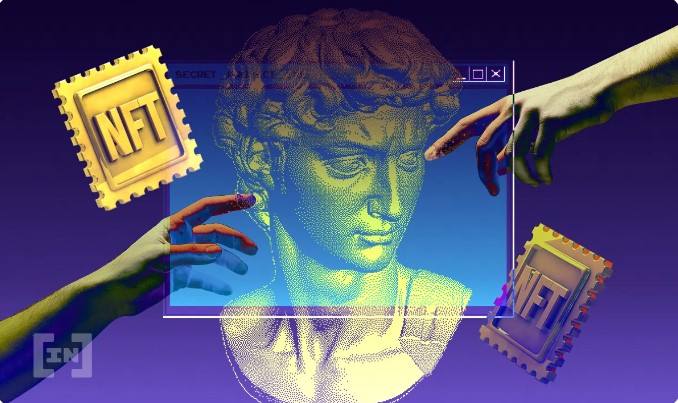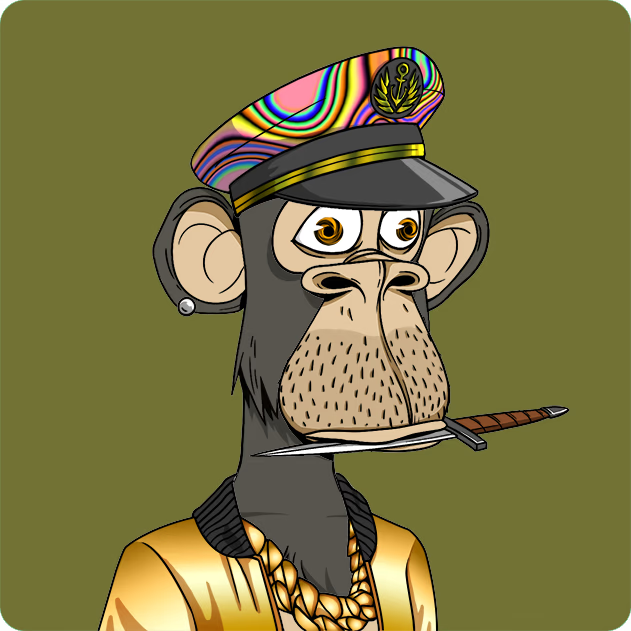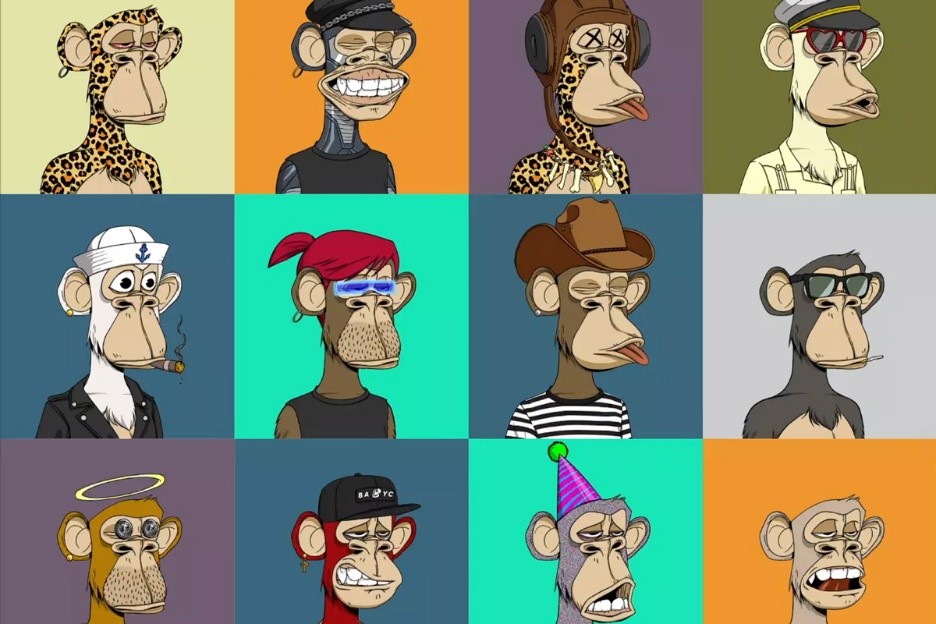AND EVENTUALLY COMES THE META-POSSESSION…

The concept of ‘possession’ is as old as the social life of mankind, and over the centuries it has been modified, regulated, more or less guaranteed, taxed in order to share a part of it with the less affluent part of society. In each case, possession has been linked to the owner’s desire to enjoy its benefits: to use it, to exchange it, to admire it, to use it as a means of social distinction. As long as socialisation takes place in the real world, all clear. But what happens if an entire planet decides to avoid reality and live fictitious existences in electronic universes? In the world of the metaverse, in which everyday life on Earth is considered the painful punishment to pay for hiding in parallel worlds, what is the point of driving a Ferrari or owning a Toulouse-Lautrec painting?
With humanity’s long and rapid transition to the digital plane, the concept of ownership has undergone significant changes and acquired new definitions such as digital economy, blockchain, decentralised finance, non-exchangeable tokens and other futuristic notions. The virtual segment of the economy is based on the blockchain system[1] . It is essentially an advanced database that stores information in the form of sequential blocks of data and is linked by cryptographic methods[2] .
Each block contains a series of transactions or other data, following a chronological sequence, and a hash[3] of the previous block, forming a blockchain. This technology provides a secure, reliable and transparent way of recording transactions or information without the need for centralised control, i.e. there are only two parties involved in each transaction, with no intermediaries. Information is recorded in blocks that cannot be changed, each new piece of data is stored in a new block and is stored on all devices of multiple independent users connected to the network[4] .
For example, if I want to transfer a cash gift to my mother using the classic banking system, the procedure will be the usual: I open an online banking application, enter the recipient’s bank details and the amount, the bank deducts the money from my account and credits it to my mother’s account. The whole transaction is under the control of the bank, which confirms the transfer and stores all data on the bank’s server. A risky process, which can be changed through incidents like server hacking or bank failure.
If I choose the blockchain system for the transfer[5] , I have to create a blockchain wallet for me and my mother (which functions as an ID on the network), access any blockchain network and transfer money from my wallet to my mother’s wallet. The transfer information is encrypted as linked blocks and copied to all computers on the network. In case an attacker tries to modify these transfers, they will have to do so on all devices on the network, which can be up to a million on large blockchain platforms, or if the computer from which the transfer was made fails, the transfer information will be stored on other devices and the transaction will continue.
Blocks of information cannot be changed and each new piece of data is stored in a new block; if Mum decides to send this money to another person, a new block will be created as a continuation of the transaction chain. Since the information is stored in non-changeable blocks, each new piece of data is stored in a new block as a unique combination of numbers and letters (hash)[6] . If an attempt is made to change the hash of one of the blocks and there is a mismatch between the information contained in the block and that of the previous block, the chain breaks and the forged transaction is rejected[7] .

Graphical illustration of the Metaverse user[8]
Since 2009, blockchain technology has been used to create cryptocurrencies, a means of payment that exists only on the Internet, with no paper expression and no value attached to the state, where the pioneer was the well-known ‘bitcoin’. Since then, blockchain technology has found wide application in various sectors such as banking, the gaming industry, payment systems, personal identification, data protection, and so on. This system is essentially fundamental to the creation of ‘virtual values’.
A token[9] , on the other hand, belongs to a digital asset that represents any rights (e.g. profit sharing or project management and are called security tokens, which bear a great resemblance to securities), value or access to services (utility tokens), stability tokens that are linked to the value of real assets, such as precious metals or other cryptocurrencies, or non-fungible tokens (NFT) – unique tokens that cannot be replaced or duplicated and are used to represent unique digital assets such as digital artworks, virtual real estate or other unique digital objects[10] .
By default, all tokens on the blockchain network are equivalent, each token can be exchanged or divided into parts, and their price is linked to the exchange rate of cryptocurrencies and they play the role of ‘coins’. NFTs are also based on the blockchain network, but are organised differently. These tokens have their own codes and metadata, making them as unique and unrepeatable as snowflakes: it is virtually impossible to split or counterfeit them. These unique tokens are a bit like property documents, with a unique notary signature and a hundred stamps[11] .
NFTs operate on the blockchain and are managed by smart contracts. A smart contract[12] is a programme on the blockchain that automatically imposes certain actions when predetermined conditions are met. In a decentralised system, two parties can interact without the intermediary normally required for transactions, replacing it with a smart contract. Blockchains, including Bitcoin and Ethereum, use smart contracts to facilitate transactions and automate processes[13] . In the digital world, it is with NFT that the exciting journey into the history of owning something that does not exist in reality begins.
Millions of pixels

Avatar pixels of CryptoPunks[14]
In 2017, a couple of punk friends from Canada came up with the idea of selling tokens in the form of unique avatars. The collection of CryptoPunks, consisting of 10,000 pixelated images, the base of which is a punk-looking token, was created on the Etherium blockchain. Initially, the CryptoPunks were distributed for free to collectors who showed interest, the only requirement to obtain them was an Ethereum wallet, which minimised the number of interested parties, because at the time the NFT market was only reserved for a small group of crypto enthusiasts, so Larva Labs could not easily find buyers for its NFTs.
In the meantime, with the great media success achieved, everything has changed: each punk has his own profile page, which shows his attributes and his ownership or sales status. The more unique attributes a character has (hat, pipe, etc.), the higher his value. CryptoPunks can now only be purchased through NFT trading platforms. The minimum price is $128,737.92[15] . The price of the NFT collection has skyrocketed since 2021. The total value of all CryptoPunks sales is equivalent to more than $2 billion. In November 2022 alone, Punks were sold for more than $18 million, with the most expensive sold for nearly $23 million at the time of the transaction[16] .
CryptoPunks are considered a form of digital art and a collector’s item and grant their owner certain privileges, most notably invitations to closed groups and chat rooms. Since 2017, CryptoPunks have grown from a simple idea to one of the world’s most famous and influential NFT projects, and since the NFT boom, when artist Beeple sold a JPG file of his 5k paintings stitched together into a single image at Christie’s auction in 2021 for a record $69 million, it has not only been a lucrative investment opportunity, but also a status symbol, and those who discovered the punks in the beginning are now millionaires.
The Punk Collection has become a cultural phenomenon, it is at the forefront of digital art and its objects are considered ‘classics’. Owning this NFT offers the opportunity to stand out. Even auction houses recognise this ‘art object’: in May 2021, nine tokens from the collection were sold at auction at Christie’s. CryptoPunks are owned by celebrities such as musician Jay-Z and tennis player Serena Williams, as well as by Visa[17] . The project has many followers and has created a series of new hypes that are born, rise to global success and then fade away in the space of a few months.
The company Yuga Labs, for example, created an NFT collection of more than 10,000 images called Bored Ape Yacht Club (BAYC), which has yielded more than $1 billion[18] . Simply astonishing. It consists of images featuring a bored-looking monkey with bizarre and unique details. The collection consists of monkey images that, depending on the complexity of the image, what it is wearing and the background it is in, increase or decrease in value. There are special websites that value monkeys according to their rarity. According to Rarity Tools, Bored Monkey No. 8135 recently received the highest ‘individual rarity rating’.
It is difficult to call it a work of art in the standard sense of the word, it is just pictures of monkeys. What sets BAYC apart from the crowd is that it has become a cultural phenomenon. For NFT connoisseurs, owning a Bored Ape means more than just owning a digital cartoon monkey: it is a ticket that grants the owner access to an exclusive club with benefits such as merchandising, parties and other ‘goodies’.
Who needs it?

Bored Monkey No. 8135[19]
The whole development of tokens is based on a simple concept: on the network, each of us can build a new electronic self (avatar) and draw a reality around it: a stable reality, which the computer remembers in every detail, and which can be connected with the realities of everyone else in the world. Mileage distances are cancelled. If I am Brad Pitt or Madonna, the number of people who will visit my virtual world will be immense. But I can also become a famous collector who will be the destination of millions of visitors eager to see the original of his pieces of art – his signature NFTs.
Anyone can create an NFT and enter it into the virtual world (which, in itself, has no limits and no end). All you need is a cryptocurrency wallet to confirm your identity and pay a fee to generate each token in the collection. You don’t even have to be the author of the work, you can use photos or images or any other material found on the web and ‘mint’ the tokens and use a smart contract to combine them into a collection. By the way, the fee required to create a token is partly paid to the participants who register the transaction in the blockchain network, and partly destroyed (or ‘burned’ in cryptocurrency jargon) to make the cryptocurrency deflationary, i.e. to reduce the amount of money in circulation[20] .
NFT can be created, but who buys it? Collecting is one of the priority areas, ‘digital collectors’ find some collections of NFT unique and worth collecting. Some think they can resell their digital asset to make a profit, or that this particular token will give its owner privileged rights in the future. And if a token from the same collection is acquired by a famous person, such possession automatically makes its owner belong to a certain ‘elite’ community: if NFT is created by someone famous, it is destined for success[21] . Paradoxical as it may seem, blockchain can be used to digitise the ‘originality’ of almost any content, from Renaissance paintings to memes and funny cat videos.
The metaverse is a concept describing distributed digital worlds or ecosystems that combine different virtual worlds, games, applications and assets into one common environment or network: here, different virtual worlds or digital platforms, which normally function independently of each other, can be linked and integrated with each other. This allows users to move between different virtual worlds or applications, transferring their assets, characters or data from one world to another. In this meta-universe, digital assets, virtual properties and other objects from different games or platforms can be combined into a single ecosystem[22] .

A selection of bored monkeys[23]
The meta-universe is structured to function independently of all platforms. Everyone is able to create new worlds and make their own decisions with their own avatar – while acting as an individual and having only one account. This is where the value of digital assets reaches a whole new level. NFT can give users, for example, a virtual ticket to a concert, a digital work of art, a car from their favourite Need for Speed or sneakers that will never exist in the real world.
All eyes will be on the digital version of you and positive emotions will come from the fact that your avatar owns and uses something in its digital universe. You will buy digital plots of land and build online houses to entertain your friends, or rather their digital copies, the friends of your avatar. The creation of a meta-universe will give new impetus to the big players in the consumer market, because now your favourite jeans should come in two versions: physical and digital. There will be new digital business models and ways to interact with the customer, such as immersive advertising, where users not only view an advertisement but can interact with it[24] .
It sounds scary. If there is a new digital world, there will also be a digital real estate market. Forward-looking investors see the real estate meta-universe, comprising land, buildings and other virtual digital assets, as a lucrative investment prospect. The use of the NFT system means that each virtual property is unique, thus creating an atmosphere of scarcity, and the limited quantity causes an increase in demand and price. Several platforms have already carved a niche for themselves in the virtual property sector.
Decentraland, for instance, allows users to acquire, develop and monetise plots of land. The platform uses its own cryptocurrency Mana and offers users the possibility to create their own digital reality, from games to art installations. Another platform, Cryptovoxels, is powered by Ethereum and is a virtual world where users can buy and create plots of land, including complex structures and architectural forms in three-dimensional space. Sandbox is a user-generated content ecosystem focused on games that allows users to design, control and monetise their own virtual assets and gaming experiences[25] .
The real dangers of the digital world

The first NFT from Quentin Tarrantino’s collection was sold for $1.1 million [26]
The development of the NFT has taken the gaming and meta-universe industry to a whole new and frankly frightening level. Using blockchain technology, NFT ownership can be securely recorded in a publicly accessible ledger, making it verifiable and tamper-proof. But if an attacker gains access to someone’s wallet, the private key that is the person’s ID can transfer any cryptocurrency or NFT.
Several successful phishing attacks targeted the owners of NFT Bored Ape and robbed them of their exclusive monkeys. The complainants claim this was due to a security vulnerability in the code of the trading platform. As a measure, the trading platform flagged the stolen tokens with a ‘suspicious activity’ warning, making it impossible to buy or sell similar lots, but on this particular site[27] . But is such an action not in contradiction with the decentralisation code?
There are also problems with transparency. Despite decentralisation, it is mainly the big players that benefit from the digital world. In the end, if there is no government regulation, the strong Internet companies will definitely prevail and we will have a ‘decentralised monopoly’. It doesn’t end there: there are also attempts at money laundering and fraud with NFT. The case of the owner’s attempt to buy a token from the CryptoPunks collection himself, using credit funds, deliberately increasing the price (to over half a billion dollars at the exchange rate at the time of the transaction) is well known[28] . And this is only the case that has been made public. How many others remain in the shadows?
Since NFTs have no value attached to them other than their uniqueness, rarity and short- and long-term resale value, a user can create an NFT, establish its value and buy it from himself through a lender, thus laundering money. Today, even in developed countries, there is no one to keep track of these transactions[29] .
An increasing number of NFT projects grant their owners the right to commercially adapt their works, which has been a great opportunity to increase brand awareness, but has led to many legal disputes and fierce copyright lawsuits[30] . A high-profile example is the lawsuit brought by the film company Miramax against Quentin Tarantino, which published, in collaboration with SCRT Labs, a collection of seven NFTs based on the 1994 film Pulp Fiction. Each NFT contained an uncut scene from the film and proprietary bonus content, including original handwritten script pages, audio commentaries by Tarantino and other details about the film and the director himself[31] .

‘The merge’, the most expensive NFT in history, paid $91.8 million[32]
But even if you own an NFT and intend to use it in your own creation, the theft of the token means the loss of your commercial rights of use[33] . Supporters of decentralisation claim that this model ensures that no single entity can control or manipulate your assets, which not only protects users from potential abuse, but also promotes a sense of fairness and uniqueness. Sensitive personal data and valuable digital assets are at stake in this game, and it does not work perfectly.
The fields of intellectual property, privacy, liability, dispute resolution, fair competition, artificial scarcity creation and hype – all these areas require legal and regulatory standards, which in turn lead to the need for collaborative solutions by industry players, policy makers and legal experts[34] . These issues are already highly complex (due to questions of jurisdiction) in the physical reality, which is clearly delimited – let alone in the immensity of the metaverse.
NFT is today comparable to the sale of lots on the Moon and names of celestial bodies, which are possible but, on earth, have no visible effect[35] : even in this analogy, the buyer does not receive physical property, but only a conditional entry in someone else’s register. Although the possibility of owning space property is well defined by the 1966 ‘Treaty on the Principles Governing the Activities of States in the Exploration and Use of Outer Space, including the Moon and Other Celestial Bodies’[36] , for the past 35 years there have been hundreds who have not resisted the temptation to post a certificate of ownership of a plot on the Moon in their homes[37] .
It is therefore an inherent drive and not a novelty. The size of the NFT market in 2022 was $20.44 billion, or over 72% of the global turnover of the entire digital asset market[38] . NFT today is like having a gold credit card, a Rolex or driving a Lamborghini in real life. It is a status, but in ‘digital’, while we still live in ‘analogue’. People spend millions on what look like monkey pictures, to accumulate digital wealth, aspire to live in the digital world and gain status there, where everything looks more beautiful, satisfying and peaceful.
Personally, I come from a different socialisation. Among all the objects I own, I have a treasure: three well-sealed bags containing my daughters’ first clothes, worn after birth. Sometimes I open them and breathe in the smell, awakening the most touching emotions in me. No blockchain, token, NFT, sensor, indicator or virtual simulation can imitate this, my true possession, my true wealth.
SVE026
[1] It is a chain of computerised data that, when put together, creates a design
[2] https://web.archive.org/web/20160521015602/http://fortune.com/2016/05/15/leaderless-blockchain-vc-fund/ ; https://web.archive.org/web/20160522034932/http://www.nytimes.com/2016/05/22/business/dealbook/crypto-ether-bitcoin-currency.html
[3] a kind of ‘hook’, consisting of a string of data that automatically links a blockchain with the following one
[4] https://aws.amazon.com/ru/what-is/blockchain/?aws-products-all.sort-by=item.additionalFields.productNameLowercase&aws-products-all.sort-order=asc
[5] https://web.archive.org/web/20160703000844/http://www.economist.com/news/briefing/21677228-technology-behind-bitcoin-lets-people-who-do-not-know-or-trust-each-other-build-dependable
[6] https://arstechnica.com/gadgets/2002/07/caching/
[7] https://blog.skillfactory.ru/glossary/blokcheyn/ ; https://st.ilsole24ore.com/art/tecnologie/2012-11-04/password-basta-arriva-token-133922.shtml?uuid=AbQa4vzG
[8] https://www.financemagnates.com/fintech/investing/virtual-real-estate-how-investors-thrive-on-the-booming-metaverse-property-market/amp/
[9] a kind of telematic token, comparable to the coins we used to use for telephoning
[10] https://www.kaspersky.ru/resource-center/definitions/what-is-an-nft
[11] https://eneva.ru/blog/chto-takoe-nft-prostymi-slovami/
[12] https://academy.binance.com/en/articles/what-are-smart-contracts
[13] https://academy.binance.com/en/articles/what-are-smart-contracts
[14] https://www.larvalabs.com/cryptopunks
[15] https://www.larvalabs.com/cryptopunks
[16] https://www.finanzen.net/ratgeber/kryptowaehrung/cryptopunks-nft
[17] https://forklog.com/cryptorium/chto-takoe-cryptopunks
[18] https://praxistipps.chip.de/was-ist-der-bored-ape-yacht-club-infos-zur-nft-sammlung_160005
[19] https://opensea.io/assets/ethereum/0xbc4ca0eda7647a8ab7c2061c2e118a18a936f13d/8135
[20] https://www.linkedin.com/pulse/buying-moon-johnson-jose-mathew/
[21] https://www.linkedin.com/pulse/buying-moon-johnson-jose-mathew/
[22] https://www.tadviser.ru/index.php/%D0%A1%D1%82%D0%B0%D1%82%D1%8C%D1%8F:%D0%9C%D0%B5%D1%82%D0%B0%D0%B2%D1%81%D0%B5%D0%BB%D0%B5%D0%BD%D0%BD%D1%8B%D0%B5_(metaverses)
[23] https://www.rollingstone.com/culture/culture-news/bayc-bored-ape-yacht-club-nft-interview-1250461/
[24] https://emit.digital/en/news/welcome-to-the-metaverse-digital-agency-dusseldorf-duesseldorf
[25] https://www.cryptopolitan.com/ru/%D0%B8%D0%BD%D0%B2%D0%B5%D1%81%D1%82%D0%BE%D1%80%D1%8B-%D0%B2-%D0%BD%D0%B5%D0%B4%D0%B2%D0%B8%D0%B6%D0%B8%D0%BC%D0%BE%D1%81%D1%82%D1%8C-%D0%BE%D0%B4%D0%B5%D1%80%D0%B6%D0%B8%D0%BC%D1%8B-%D0%B2%D0%B8%D1%80%D1%82%D1%83%D0%B0%D0%BB%D1%8C%D0%BD%D1%8B%D0%BC%D0%B8-%D0%B7%D0%B5%D0%BC%D0%BB%D1%8F%D0%BC%D0%B8/
[26] https://forklog.com/news/kventin-tarantino-prodal-pervyj-nft-iz-kollektsii-za-1-1-mln
[27] https://cointelegraph.com/news/opensea-freezes-2-2m-of-stolen-bored-apes ; https://www.artnews.com/art-news/news/bored-ape-owners-sue-opensea-1234624875/
[28] https://habr.com/ru/amp/publications/647959/
[29] https://habr.com/ru/amp/publications/647959/
[30] https://www.bloomberg.com/news/articles/2022-03-21/bored-ape-nft-spinoff-venture-gone-sour-sparks-legal-fight?leadSource=uverify%20wall
[31] https://insider.ua/ru/pervyj-nft-kriminalnogo-chtiva-kventina-tarantino-prodali-za-11-mln-na-aukczione/
[32] https://nftcrypto.io/the-merge-nft/
[33] https://www.buzzfeednews.com/article/sarahemerson/seth-green-bored-ape-stolen-tv-show
[34] https://www.linkedin.com/pulse/metaverse-blockchain-strivemindz/
[35] https://eu.usatoday.com/story/news/factcheck/2021/08/24/fact-check-dennis-hopes-sale-land-moon-isnt-legal/8215690002/
[36] https://www.un.org/ru/documents/decl_conv/conventions/outer_space_governing.shtml
[37] https://www.businessinsider.com/man-selling-real-estate-on-the-moon-2013-3?r=US&IR=T




Leave a Reply